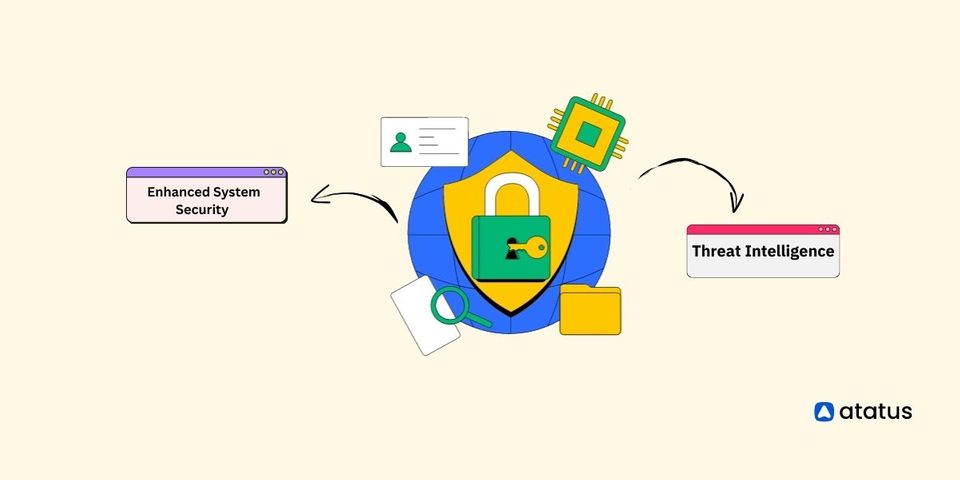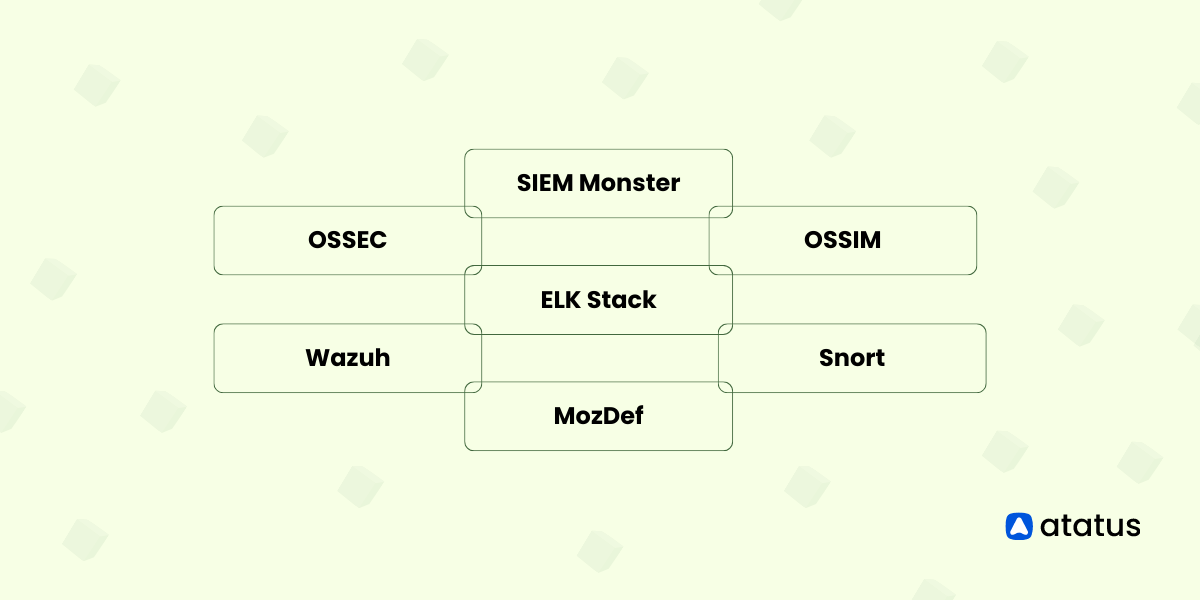SIEM Tools: For Enhanced Threat Intelligence and System Security
SIEM is an overarching mechanism combining Security Event Management (SEM) and Security Information Management (SIM).
It is a combination of different tools such as Event Logs, Security Event Logs, Event Correlation, SIM etc. These work in tandem to provide you an up-to-date threat intelligence infrastructure and enhanced security for your applications and hardware.
SIEM erases the ambiguity of cyberattacks by providing us with a 360 degree view of what is happening within our system. Log Files are definitely the best source to catch the attack points but having an independent Log Analyzer might fall short of the rising complexities of the attacks itself. This warrants the need for a complete security package and that is offered by these SIEM Tools.
In this article, we will focus on what features to lookout for when choosing a SIEM Solution and some of the popular ones available out there today.
Table Of Contents:-
What is SIEM?
SIEM stands for Security Information and Event Management. It is a software solution that provides real-time analysis of security alerts and events generated by network hardware and applications. SIEM systems collect and analyze security data from multiple sources to identify and respond to security threats.
SIEM solutions are used by organizations of all sizes to improve their security posture and protect against cyber threats. They provide a centralized view of security events across the organization and enable security teams to respond quickly and effectively to security incidents.
SIEM solutions typically perform the following functions:
- SIEM systems collect log data from various sources, including network devices, servers, and applications.
- They then convert raw log data into a standardized format to enable easy analysis.
- SIEM systems analyze log data in real-time to detect patterns and identify security incidents.
- They generate alerts and notifications when security incidents are detected.
- It provides reporting and analysis capabilities to help security teams identify and investigate security incidents.
- SIEM systems can integrate with external threat intelligence sources to enhance threat detection and response capabilities.
Why is SIEM important?
According to AlienVault's research, most businesses are concerned about cloud security threats, 55% are concerned about phishing and 45% are concerned about ransomware.
SIEM solutions are essential for organizations that want to improve their security. They provide a comprehensive security monitoring and response solution that allows organizations to detect and respond to threats quickly and effectively, minimizing the impact of security incidents on their business.
SIEM Tools can be used not only to monitor the security of a network but also to detect and analyze any emerging threats in real-time.
They provide us with:
- Centralized visibility: SIEM solutions collect and analyze security data from various sources across an organization's network, providing a centralized view of security events. This enables security teams to quickly identify and respond to potential security threats.
- Real-time threat detection: SIEM solutions can analyze security events in real-time and correlate them with other events to identify potential security incidents. This allows security teams to detect and respond to threats quickly, reducing the risk of data breaches and other security incidents.
- Compliance: SIEM solutions can help organizations meet regulatory compliance requirements by providing audit trails and reporting on security incidents, access controls, and other security-related metrics.
- Proactive security: SIEM solutions can integrate with external threat intelligence sources to help organizations stay up-to-date on the latest threats and take proactive measures to protect against them.
- Incident response: SIEM solutions provide security teams with the tools they need to investigate security incidents and identify the root cause of security breaches. This enables organizations to take corrective action and prevent similar incidents from happening in the future.
Features of SIEM tools
SIEM tools offer a wide range of features that help organizations detect, investigate, and respond to security threats. By providing a centralized view of security events and allowing security teams to take proactive measures, SIEM tools can improve an organization's security posture and minimize the impact of security incidents.
The features include the following:
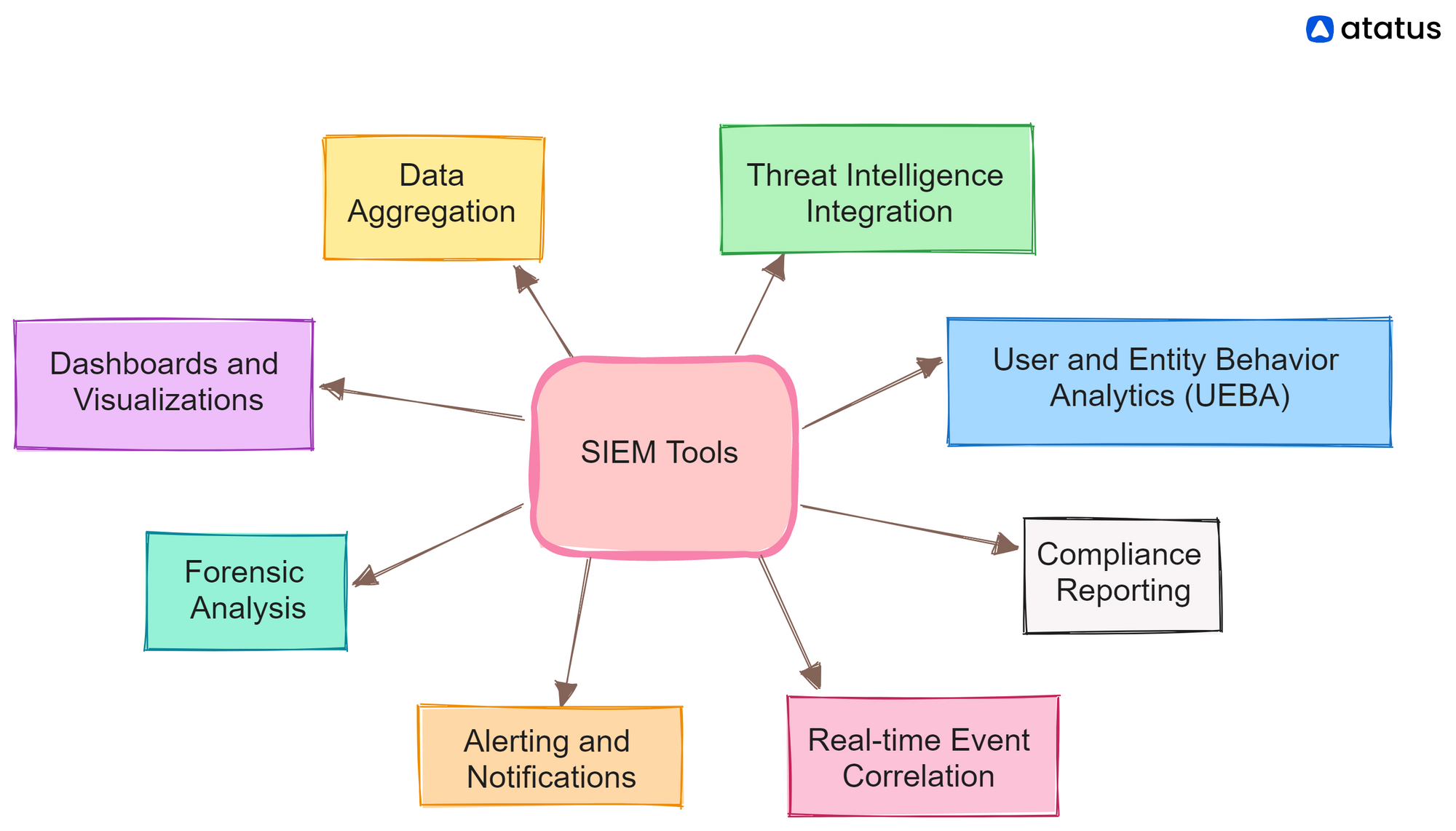
- Data Aggregation: SIEM tools gather and consolidate log data from diverse sources across the IT infrastructure, including servers, network devices, security appliances, and applications. This centralized approach enables comprehensive monitoring of security events.
- Real-time Event Correlation: SIEM tools analyze and correlate security events in real-time to identify connections and patterns among different events. By examining events from multiple sources, they can uncover complex attack scenarios and provide a more accurate understanding of potential security threats.
- Threat Intelligence Integration: SIEM tools integrate with external threat intelligence feeds and databases to enhance their ability to detect and respond to known malicious activities. By leveraging up-to-date information on known malware, suspicious IP addresses, and other indicators of compromise, they improve their threat detection capabilities.
- Alerting and Notifications: SIEM tools generate alerts and notifications when specific security events or patterns are detected. These alerts can be delivered to security analysts or administrators through various channels like email, SMS, or integration with incident response platforms, facilitating prompt incident response.
- Compliance Reporting: SIEM tools assist organizations in meeting regulatory compliance requirements by offering pre-built reports and templates. By analyzing relevant security event data, they generate compliance reports that demonstrate adherence to specific standards such as PCI DSS, HIPAA, or GDPR.
- User and Entity Behavior Analytics (UEBA): SIEM tools incorporate UEBA capabilities to detect anomalous behavior exhibited by users or entities within the IT environment. By establishing baselines of normal behavior, they can identify deviations that may indicate insider threats, compromised accounts, or other malicious activities.
- Forensic Analysis: SIEM tools enable thorough forensic analysis of security events and incidents. They provide the ability to search and investigate historical log data, conduct in-depth analysis, and reconstruct event timelines. This aids in incident response and post-incident investigations.
- Dashboards and Visualizations: SIEM tools offer intuitive dashboards and visualizations that present security event data in a clear and comprehensible manner. These visual representations, such as charts, graphs, and maps, allow security analysts to swiftly identify trends, patterns, and potential security risks.
Top SIEM Tools and Platforms
Let's check out what are the best SIEM tools available out there:
1. Splunk Enterprise Security
Splunk Enterprise Security is a SIEM solution that helps organizations detect, investigate, and respond to security threats. Splunk Enterprise Security works by collecting and analyzing data from a variety of sources, including network devices, servers, applications, and security devices.
It then uses advanced analytics to identify potential security threats and generate alerts for security teams to investigate. Splunk Enterprise Security also integrates with external threat intelligence sources to enhance threat detection capabilities.
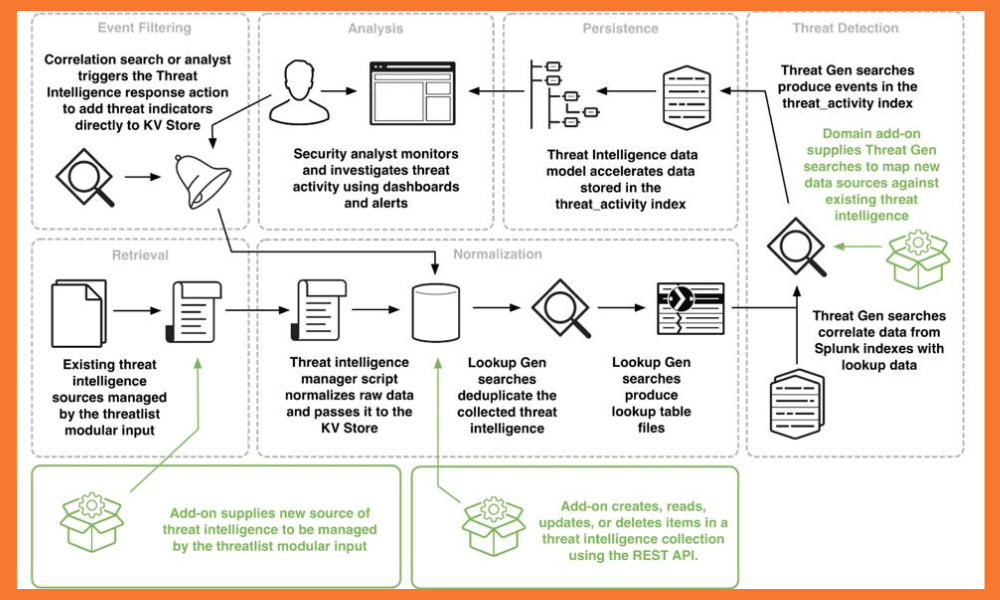
Here is an overview of its working, pricing, pros, and cons:
Pricing
Splunk Enterprise Security is a premium product and can be expensive for smaller organizations. The pricing model is based on the amount of data ingested per day and the number of users. Pricing starts at $150 per gigabyte per day, and there are additional costs for premium features and support.
Pros
- Splunk Enterprise Security provides advanced analytics capabilities, including machine learning and behavior-based analytics, that help organizations detect and respond to security threats quickly and effectively.
- Splunk Enterprise Security can be customized to meet the specific security needs of an organization. It also integrates with a wide range of third-party security tools and platforms.
- Splunk can handle large volumes of security data, making it suitable for organizations of all sizes.
- Splunk has a user-friendly interface that makes it easy for security teams to investigate security incidents and take corrective action.
Cons
- Splunk Enterprise Security is a premium product and can be expensive for smaller organizations.
- It has a steep learning curve and may require training for security teams to use effectively.
- Splunk Enterprise Security can be resource-intensive, requiring significant processing power and storage capacity to handle large volumes of security data.
2. Logrythm nextgen SIEM platform
LogRhythm NextGen SIEM Platform works similarly to Splunk Enterprise security. It collects data from various sources and uses the advanced analysis capabilities to churn out the possible security threats.
The platform also includes a security orchestration, automation, and response (SOAR) capability that automates security operations and response workflows to improve incident response times.
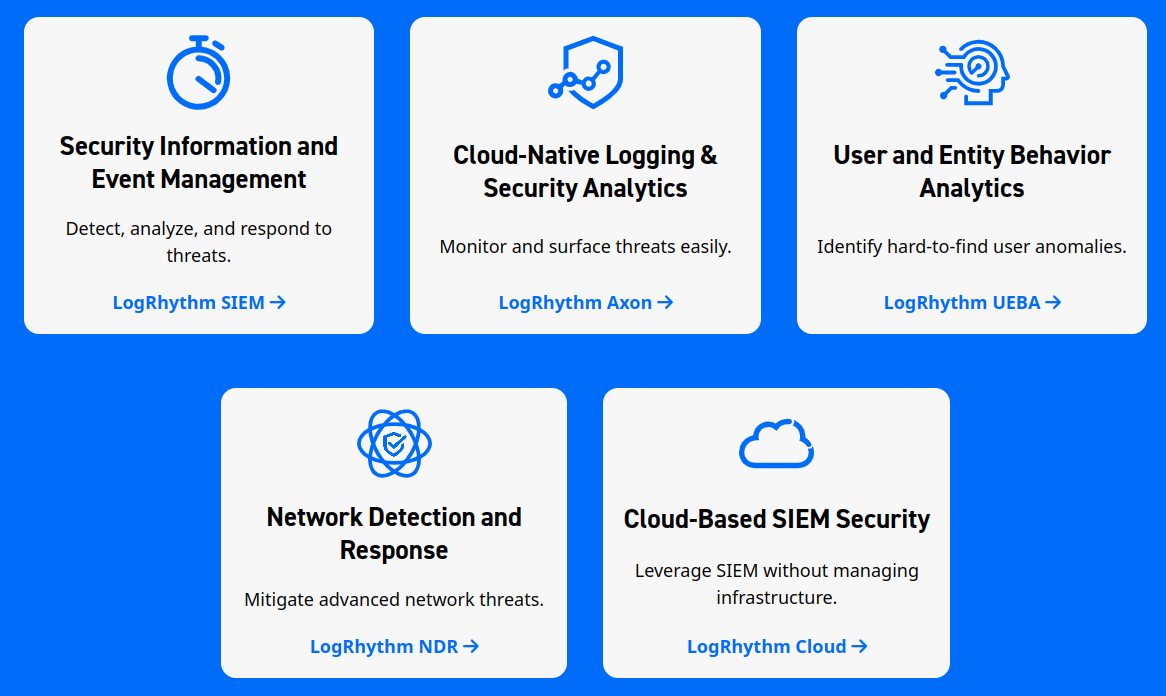
Pricing
LogRhythm NextGen SIEM Platform’s pricing is based on the amount of data ingested per day and the number of users. Pricing starts at $50,000 per year for a standard deployment and increases with additional features and support.
Pros
- LogRhythm NextGen SIEM Platform provides advanced analytics capabilities, including machine learning and behavior-based analytics, that help organizations detect and respond to security threats quickly and effectively.
- The platform includes a SOAR capability that automates security operations and response workflows to improve incident response times and reduce manual effort.
- LogRhythm NextGen SIEM Platform includes compliance management capabilities that help organizations meet regulatory requirements and demonstrate compliance with industry standards.
- The platform has a user-friendly interface that makes it easy for security teams to investigate security incidents and take corrective action.
Cons
- Cost considerations for smaller businesses.
- The platform can be resource-intensive, requiring significant processing power and storage capacity to handle large volumes of security data.
- Complexity in the technical aspects of LogRhythm NextGen SIEM Platform.
- Integration with third-party security tools and platforms can be challenging.
3. Datadog Security Monitoring
Datadog is a cloud-based security monitoring and analytics platform that provides real-time insights into an organization's security posture. Its monitoring capabilities include
- Continuous monitoring: Datadog Security Monitoring provides continuous monitoring of an organization's infrastructure, applications, and network traffic, providing real-time visibility into potential security threats.
- Threat detection: The platform includes threat detection capabilities that use machine learning and behavioral analysis to identify potential security threats.
- Real-time alerts: Datadog Security Monitoring provides real-time alerts when potential security threats are detected, allowing security teams to take immediate action to mitigate risks.
- Compliance monitoring: The platform includes compliance monitoring capabilities that help organizations ensure they are meeting regulatory and industry standards.
- Integration with third-party tools: Datadog Security Monitoring can integrate with a variety of third-party security tools, including SIEM solutions, to provide a more comprehensive security posture view.
- Dashboard and reporting: The platform includes a dashboard and reporting capabilities that provide detailed insights into an organization's security posture, allowing security teams to identify potential risks and take corrective action quickly.
- Multi-cloud support: Datadog Security Monitoring can monitor security across multiple cloud environments, including AWS, Azure, and Google Cloud Platform.
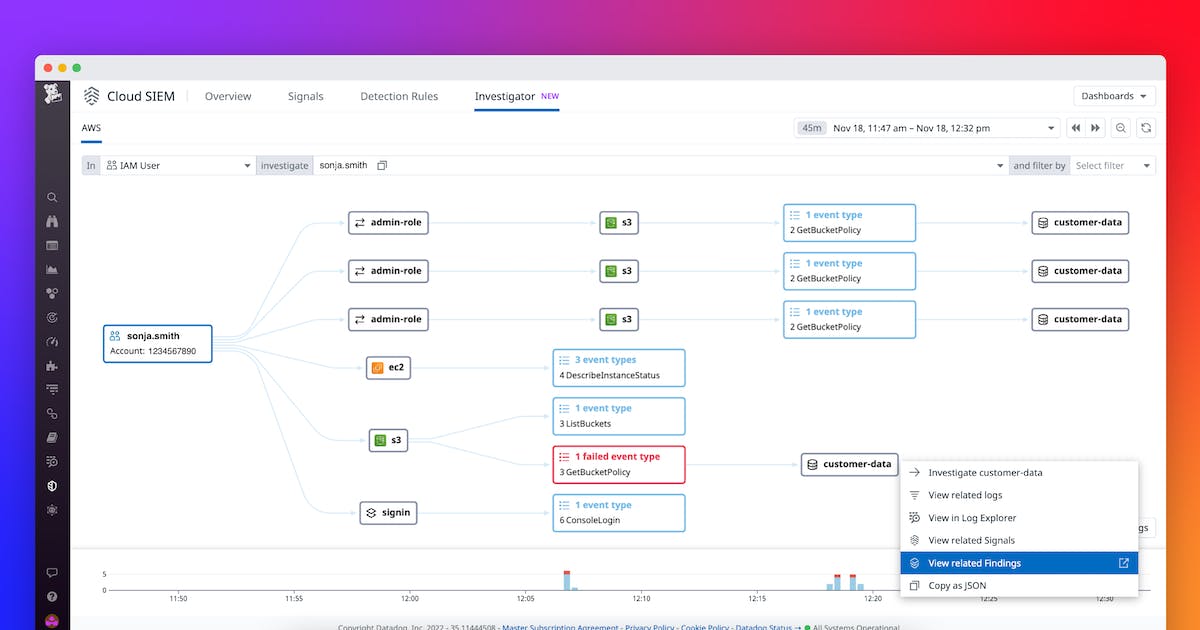
Pricing
Pricing for Datadog Security Monitoring varies based on the number of hosts and services being monitored, with pricing starting at $15 per host per month.
Pros
- Datadog Security Monitoring provides real-time monitoring of an organization's security posture, allowing security teams to quickly identify and respond to potential threats.
- The platform uses machine learning to identify potential security threats, reducing the number of false positives and improving the accuracy of threat detection.
- Datadog Security Monitoring can integrate with a variety of third-party security tools and platforms, making it easy to add to an existing security infrastructure.
- The platform supports monitoring across multiple cloud environments, making it a good fit for organizations with complex cloud deployments.
Cons
- The prices can vary according to the number of programs a site is hosting and so on.
- While Datadog Security Monitoring provides a comprehensive view of an organization's security posture, it may not provide the same level of functionality as more specialized security tools.
- Datadog can be a resource-intensive tool.
4. ManageEngine event log analyzer
ManageEngine EventLog Analyzer is yet another SIEM solution that helps organizations to monitor and analyze log data from various sources. It offers a range of features that enable security teams to quickly identify and respond to potential security threats. Here is an overview of ManageEngine EventLog Analyzer's capabilities:
It provides real-time monitoring of log data to detect and respond to potential security threats quickly. They use correlation rules and anomaly detection algorithms to do so. ManageEngine EventLog Analyzer includes compliance reporting capabilities that help organizations to meet regulatory and industry standards.
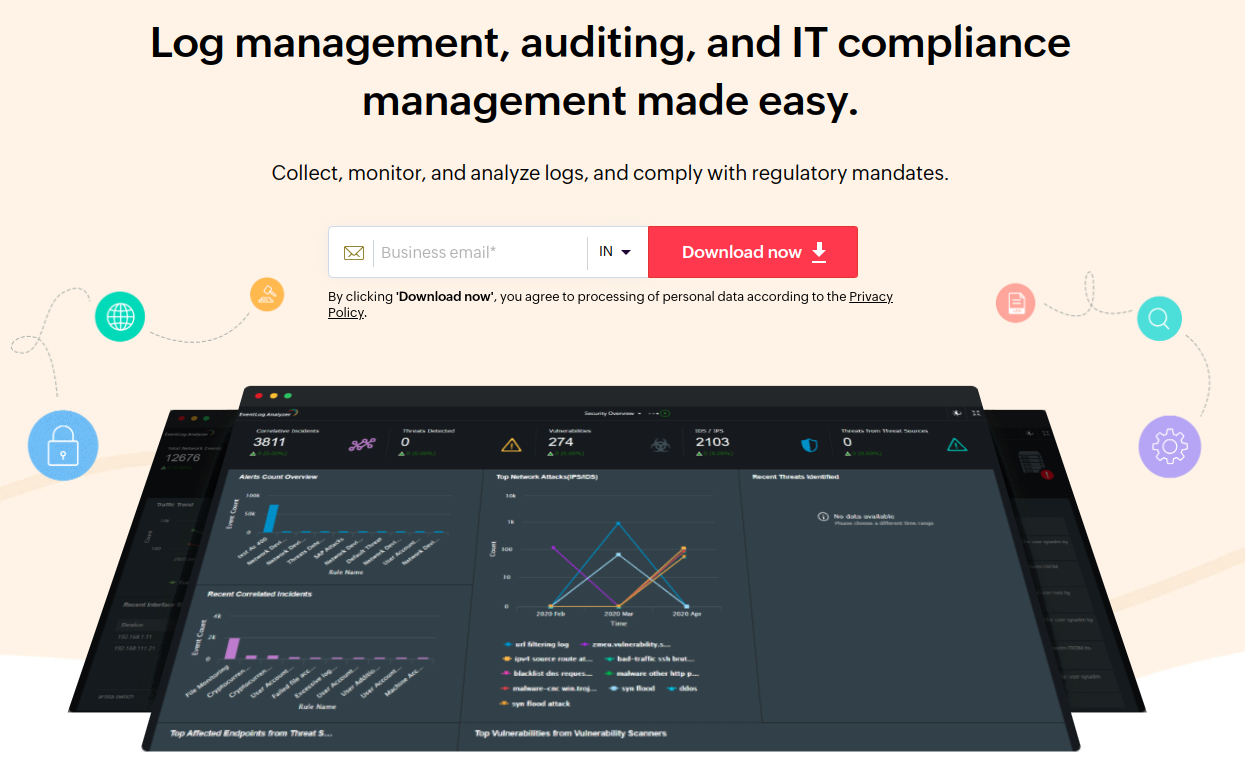
The platform includes a log search functionality that enables security teams to search through log data quickly and easily to identify potential security incidents. The log data can be visualized with ManageEngine’s customisable dashboards. With these dashvboards it becomes easy to manage and track any anomalies arising in your organization.
Pricing
Pricing for ManageEngine EventLog Analyzer is based on the number of log sources and the edition of the software. The pricing starts at $595 per year for the Professional Edition and goes up to $11,995 per year for the Enterprise Edition.
Pros:
- The platform can collect log data from a wide range of sources, enabling organizations to consolidate all their log data in a single location.
- ManageEngine EventLog Analyzer provides real-time monitoring of log data, allowing security teams to quickly detect and respond to potential security threats.
- The platform includes customizable dashboards and reporting capabilities that provide a comprehensive view of an organization's security posture.
- ManageEngine EventLog Analyzer includes compliance reporting capabilities that help organizations to meet regulatory and industry standards.
- The platform's pricing is relatively affordable compared to other SIEM solutions.
Cons
- Limited threat detection capabilities.
- Some users may find the platform's customization options limited compared to other SIEM solutions.
- The platform can be difficult to set up and configure, and it may take some time for security teams to become familiar with the interface.
5. SolarWinds SIEM Security and Monitoring
SolarWinds SIEM Security and Monitoring is a comprehensive security monitoring solution that provides real-time threat detection, compliance management, and incident response capabilities. Here is an overview of its capabilities:
The platform includes advanced threat detection capabilities that use behavioral analysis, machine learning, and other techniques to identify potential security threats and includes compliance management capabilities that help organizations to meet regulatory and industry standards, including HIPAA, PCI DSS, and GDPR.
SolarWinds provides incident response capabilities that enable security teams to investigate security incidents and take immediate action. Upon contracting any security threats it sends alerts and notifications, enabling security teams to take immediate action.
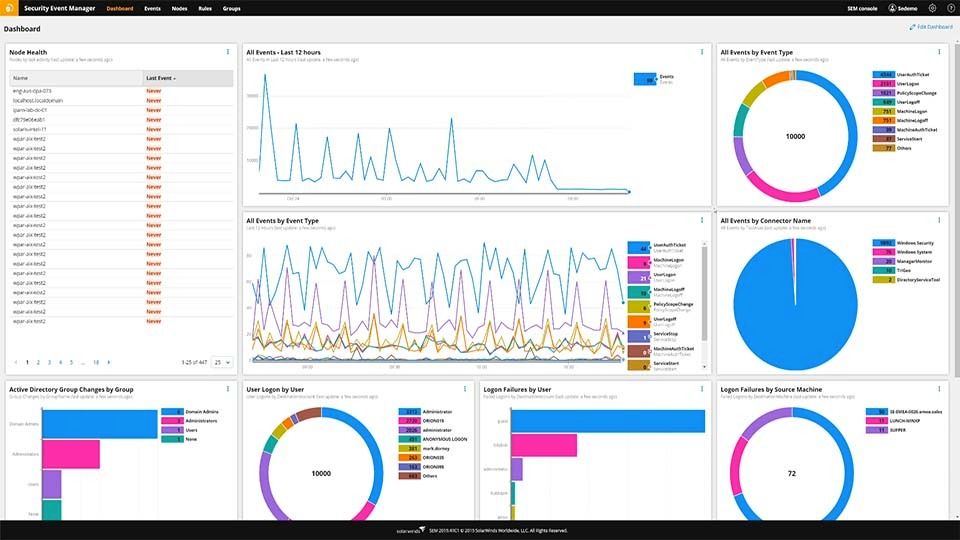
Pricing
Pricing for SolarWinds SIEM is based on the number of nodes and the edition of the software. The pricing starts at $2,995 for up to 50 nodes and goes up to $44,995 for up to 1,000 nodes.
Pros
- The platform includes advanced threat detection capabilities that use behavioral analysis, machine learning, and other techniques to identify potential security threats.
- Comprehensive compliance management.
- The platform includes incident response capabilities
- Customizable dashboards and reporting
- The platform's pricing is scalable based on the number of nodes, making it affordable for organizations of all sizes.
Cons
- The platform can be complex to set up and configure.
- Some users may find that the platform's automation capabilities are limited compared to other SIEM solutions.
- Resource-intensive
Summary
In this article we have discussed about Security Intelligence and Event Management tools. We read all about their importance and ways to make effective utilisation of these tools. This is the brief summary of the article for a quick read:
- Splunk Enterprise Security and LogRhythm NextGen SIEM Platforms are both exhaustive security solutions that provides advanced analytics, automation, and compliance management capabilities. However, their cost and resource requirements may make them less accessible for smaller organizations, and they may also demand significant training and expertise on the part of the users.
- Datadog and SolarWinds Security Monitoring provides a comprehensive and real-time view of an organization's security posture, with machine learning and integration capabilities to improve the accuracy and effectiveness of threat detection. But thier complexity and resource intensiveness can be a concern.
- ManageEngine EventLog Analyzer is yet another powerful SIEM tool, however, it may not have the same level of threat detection capabilities as more advanced SIEM solutions, and its learning curve may be steep for some users.
There are credible tools out there for all woes, but choosing the right fit for your organization is in your hands.
Atatus Logs Monitoring and Management
Atatus offers a Logs Monitoring solution which is delivered as a fully managed cloud service with minimal setup at any scale that requires no maintenance. It monitors logs from all of your systems and applications into a centralized and easy-to-navigate user interface, allowing you to troubleshoot faster.

We give a cost-effective, scalable method to centralized logging, so you can obtain total insight across your complex architecture. To cut through the noise and focus on the key events that matter, you can search the logs by hostname, service, source, messages, and more. When you can correlate log events with APM slow traces and errors, troubleshooting becomes easy.
#1 Solution for Logs, Traces & Metrics
APM
Kubernetes
Logs
Synthetics
RUM
Serverless
Security
More

